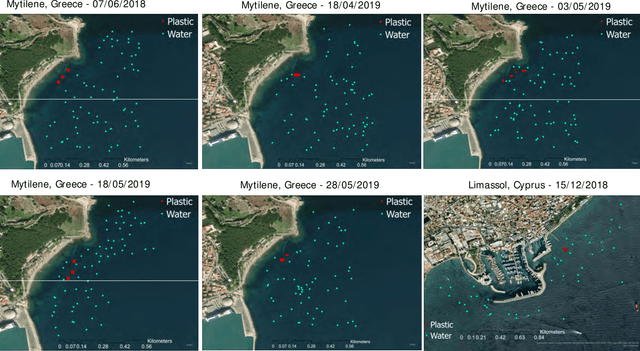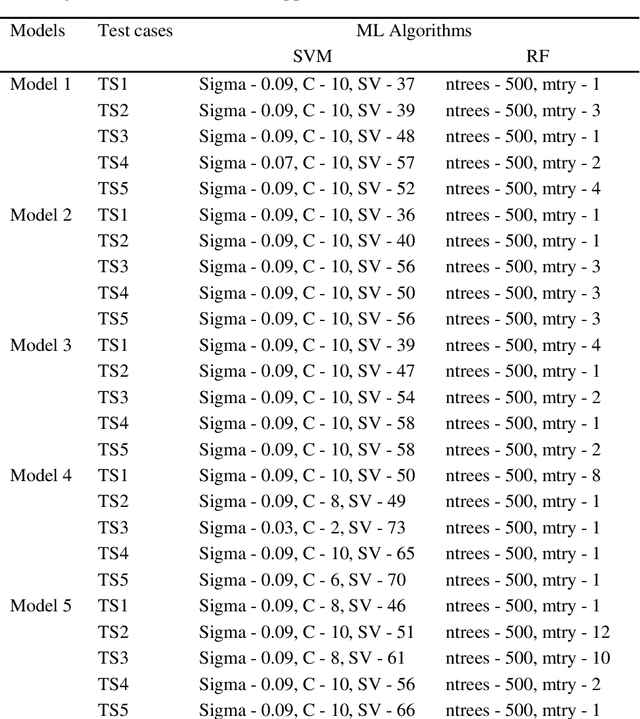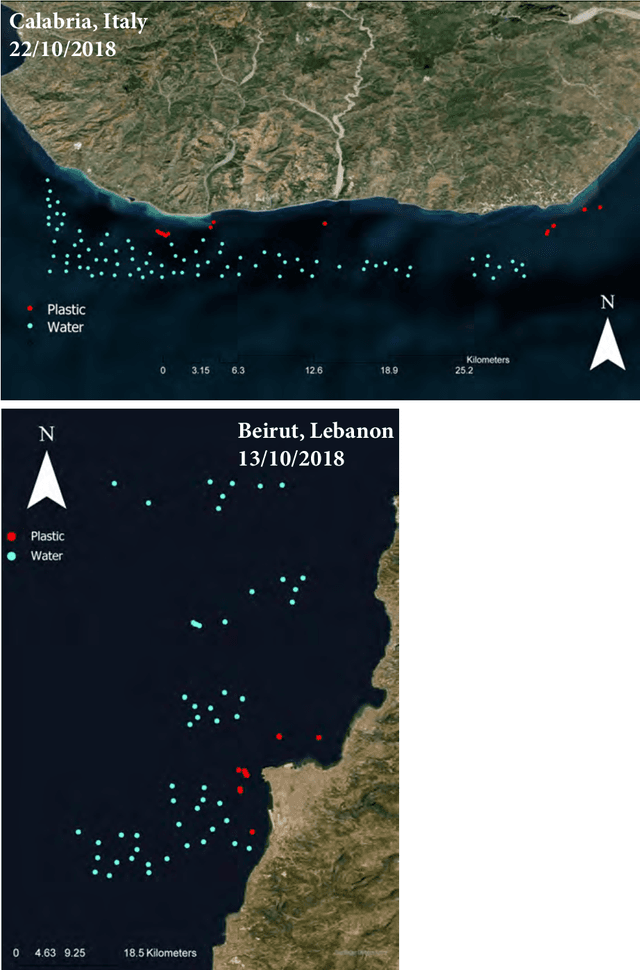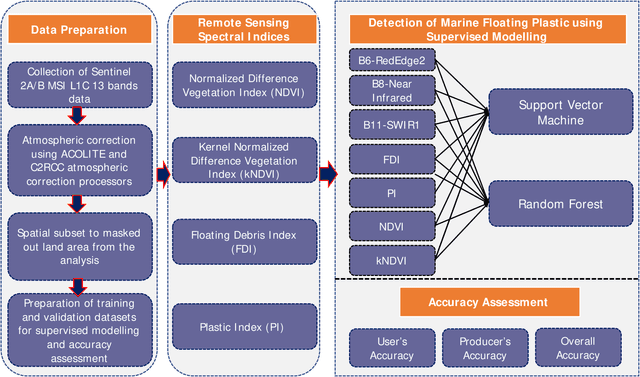Srikanta Sannigrahi
Detection of marine floating plastic using Sentinel-2 imagery and machine learning models
Jun 08, 2021



Abstract:The increasing level of marine plastic pollution poses severe threats to the marine ecosystem and biodiversity. The present study attempted to explore the full functionality of open Sentinel satellite data and ML models for detecting and classifying floating plastic debris in Mytilene (Greece), Limassol (Cyprus), Calabria (Italy), and Beirut (Lebanon). Two ML models, i.e. Support Vector Machine (SVM) and Random Forest (RF) were utilized to carry out the classification analysis. In-situ plastic location data was collected from the control experiment conducted in Mytilene, Greece and Limassol, Cyprus, and the same was considered for training the models. Both remote sensing bands and spectral indices were used for developing the ML models. A spectral signature profile for plastic was created for discriminating the floating plastic from other marine debris. A newly developed index, kernel Normalized Difference Vegetation Index (kNDVI), was incorporated into the modelling to examine its contribution to model performances. Both SVM and RF were performed well in five models and test case combinations. Among the two ML models, the highest performance was measured for the RF. The inclusion of kNDVI was found effective and increased the model performances, reflected by high balanced accuracy measured for model 2 (~80% to ~98 % for SVM and ~87% to ~97 % for RF). Using the best-performed model, an automated floating plastic detection system was developed and tested in Calabria and Beirut. For both sites, the trained model had detected the floating plastic with ~99% accuracy. Among the six predictors, the FDI was found the most important variable for detecting marine floating plastic. These findings collectively suggest that high-resolution remote sensing imagery and the automated ML models can be an effective alternative for the cost-effective detection of marine floating plastic.
 Add to Chrome
Add to Chrome Add to Firefox
Add to Firefox Add to Edge
Add to Edge